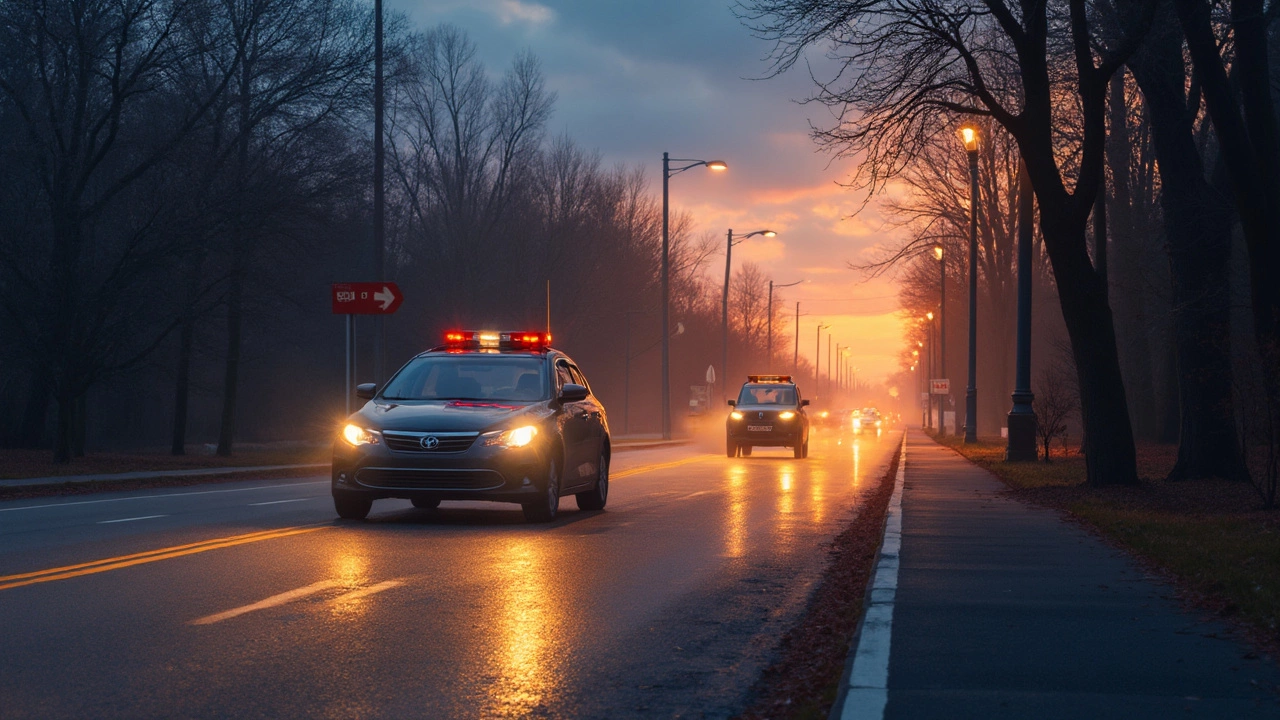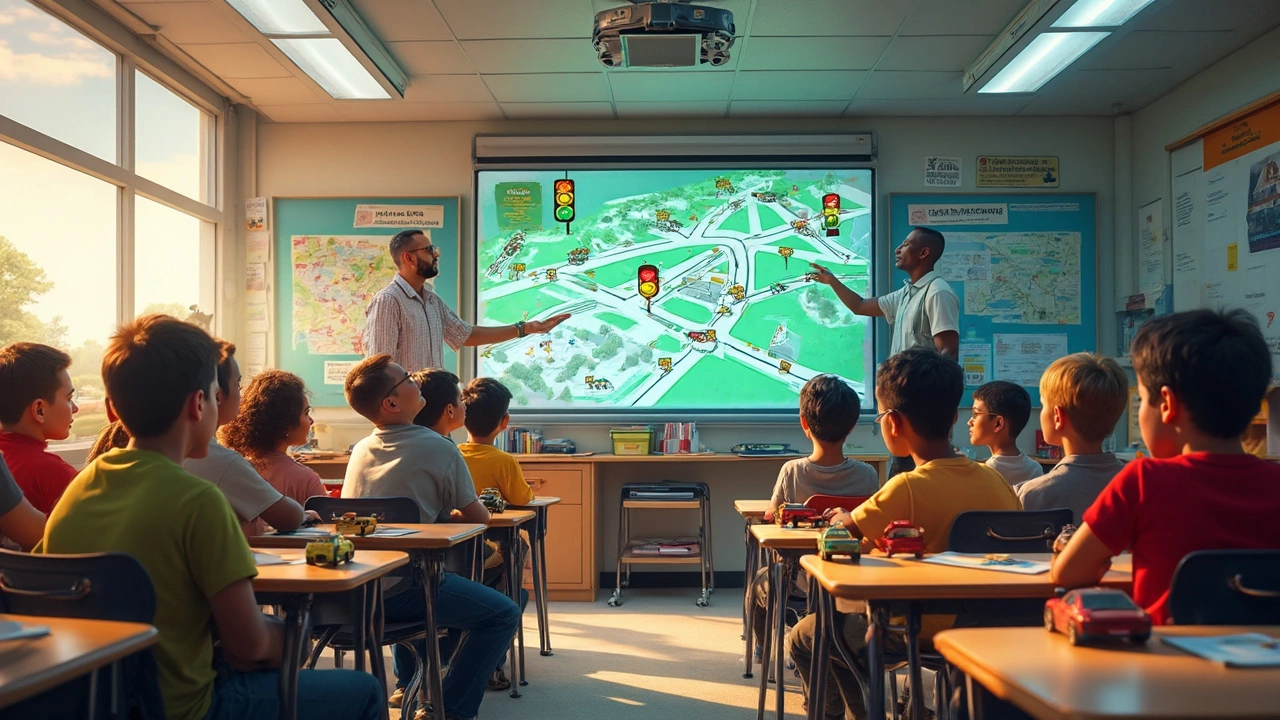If you're thinking about getting your driver's license in Virginia, you're probably wondering how many hours you need to spend behind the wheel to make it happen. Well, here's the scoop. In the State of Virginia, budding drivers are required to log at least 45 hours of driving practice. Out of those hours, 15 must be clocked during nighttime driving to help you get accustomed to different lighting conditions. These hours need to be certified by a parent or guardian, which means no fudging the numbers!
But wait, there's more to the story! Alongside these practice hours, Virginia also mandates that you complete a state-approved driver's education program. This typically involves a mix of theory lessons and some additional behind-the-wheel training with a certified instructor. It’s all about making sure you’re safe and sound on the roads.
Sounds like a lot, right? But don't worry! This comprehensive blend of classroom and practical driving lessons prepares you well for the actual driving test. Stay tuned as we dive deeper into each requirement and share a few tips to help you along your journey to conquering the roads of VA.
- Understanding the Basics of VA License Requirements
- The Role of Driver’s Education in VA
- How Many Practice Hours Are Required?
- Getting from Learner's Permit to Full License
- Useful Tips for New Drivers
Understanding the Basics of VA License Requirements
Getting your driver's license in Virginia might seem like a daunting task, but once you break it down, it's pretty straightforward. It all starts with your learner's permit. This is your ticket to start practicing driving, but you gotta be at least 15 and a half to apply. At this stage, you're mostly focusing on learning the rules of the road and how to maneuver safely on a busy street.
Once you have your learner's permit, the state requires you to hold onto it for at least nine months before you can move to the next step. During this time, you need to complete a driver's education course. This is key because it covers both classroom learning and practical, behind-the-wheel training. If you're under 18, this course is non-negotiable.
Now, let's talk about logging those practice hours, one of the crucial VA driving requirements. For those 45 hours behind the wheel, 15 should be completed at night. Make sure to document these hours with a parent or guardian signing off. Without these, you can't proceed to the driving test.
Before you get your full license, if you're under 18, there's sometimes a provisional phase. This means that after your test, there might be restrictions like no late-night driving or limits on the number of passengers you can have. This phase is about ensuring you're truly comfortable and safe on the road.
Key Points to Remember
- Hold your learner's permit for at least 9 months.
- Complete a state-approved driver's education course.
- Log 45 hours of driving practice, including 15 nighttime hours.
- Parents or guardians need to certify your practice hours.
- If you're under 18, expect some provisional license restrictions.
Basically, Virginia wants to make sure you’re more than ready to handle any situation behind the wheel. It's a step-by-step process designed to ensure every new driver is prepared, safe, and confident.
The Role of Driver’s Education in VA
So, why is driver’s education such a big deal in Virginia? It's all about making sure new drivers hit the roads with confidence and know-how. In the VA driving requirements, this education is a must for anyone under 18. It sets the foundation by providing both classroom knowledge and behind-the-wheel skills.
Classroom Instruction
The classroom part covers all sorts of important stuff like traffic laws, the meaning of road signs, and how to handle different driving conditions. Imagine knowing what to do when faced with rain, fog, or even a surprise detour. Typically, you’ll spend about 36 periods in the classroom, ensuring you’ve got the basics down pat.
Behind-the-Wheel Training
Driver’s education doesn’t stop at books. You’ll also get real-world experience with a certified instructor who shows you the ropes. This hands-on training usually includes a minimum of 14 periods, split between actual driving and observing other student drivers in action. This part is crucial because it’s where theory meets practice.
- Practice Makes Perfect: Repeatedly getting behind the wheel with guidance helps you learn the ropes comfortably, before you venture out solo.
- Focus on Safety: Emphasis on safe driving habits is drilled into you, because knowing the rules isn't enough; following them is what keeps you on the right side of the law.
Why All This Matters
The goal with this rigorous driver’s education is to cut down on teen driving accidents and to make sure that everyone who earns their license is prepared to handle common driving scenarios. Virginia’s program sets a high standard aimed at building responsible and safe drivers.
If we take a look at the stats, driver education significantly lowers the risk of accidents among newbies on the road. So even if it feels like a lot, it's totally worth the time and effort.

How Many Practice Hours Are Required?
Wondering precisely how many hours you need to spend practicing driving before you can get your license in Virginia? Let's break it down. Virginia law mandates that you must complete a minimum of 45 hours of driving practice if you're under 18. This practice isn't just daytime driving; a crucial part of these hours includes at least 15 hours of nighttime driving. This is to ensure you can handle different lighting and visibility challenges with confidence.
These practice hours aren't just about ticking boxes. They serve as a foundation for building safe and responsible driving habits. The more you drive, the more comfortable and skilled you'll become behind the wheel. Oh, and don't try to sneak past this requirement. The hours you log need to be certified by a parent or guardian, affirming that you've done the real work.
Here's how the practice breakdown generally works:
- Complete 30 hours of daytime driving to gain overall road confidence and familiarity.
- Clock 15 hours of driving at night to familiarize yourself with driving in low light or challenging weather conditions.
Being thorough with these practice hours is essential and prepared Virginia drivers understand the value of logging in ample practice time. It doesn't just help in passing your driving test, but it also makes you road-ready for every situation.
While tackling this requirement, take advantage of every opportunity to practice in diverse scenarios: urban streets, highways, and different weather conditions. Not only will this prepare you for your test, but it'll also equip you with the confidence needed for real-world driving.
If you're curious about how different your experience might be elsewhere or need a recap of these numbers, here's a comparative glance with a neighboring state:
| State | Total Practice Hours | Nighttime Hours |
|---|---|---|
| Virginia | 45 | 15 |
| Maryland | 60 | 10 |
Remember, practice really does make perfect. The more hands-on time you have behind the wheel, the more adept you'll be at handling whatever the road throws your way. So, buckle up and get those miles in!
Getting from Learner's Permit to Full License
So, you're on the road with your learner's permit and eager to move up to that coveted full license in Virginia. Here's what you need to know about making that transition smoothly. First off, you need to hold that learner’s permit for a full nine months before you're eligible to apply for a full driver's license. This gives you ample time to practice and shadow experienced drivers.
Step 1: Know Your Requirements
Next, you’ll need to prove that you've completed both your driver's education and logged those 45 practice hours—15 at night. Don't cut corners here because these steps are crucial for developing safe, effective driving habits. Also, remember, the legal driving age for a full license in VA is 16 and 3 months.
Step 2: Pass the Road Skills Test
Once you've ticked those boxes, it’s time for the road skills test. You’ll demonstrate your driving abilities to ensure you're ready for the responsibility a full license carries. It includes practical situations like parking, turning, and obeying road signs—the whole shebang. Practice makes perfect, so don’t rush this stage.
Step 3: Visit the DMV
You’ll then visit your local Department of Motor Vehicles (DMV) with your paperwork. Make sure to take along your ID, proof of residence, and your driving log. Pay any fees, and if you pass, congrats! You're officially a licensed driver in VA.
Stay Sharp: Active Restrictions
Even with a full license, if you’re under 18, remember there are restrictions. You can’t drive between midnight and 4 a.m., and you've got a passenger limit to adhere to, too. This is just to ensure you’re extra safe as you adjust to driving solo.
Before you know it, you'll be a fully-fledged driver, navigating Virginia's roads with ease. Take each step seriously, and you’ll find that getting your full driver’s license isn’t just a formality—it’s a major milestone.

Useful Tips for New Drivers
Getting your driver’s license is a big step, but being behind the wheel for the first time can be daunting. Here are some solid tips to help you cruise confidently through those early days.
Stay Calm and Focused
Let’s face it, driving can be nerve-wracking, especially in heavy traffic. Keeping your cool is crucial. Practice deep breaths and stay focused on the road, it makes a world of difference.
Familiarize Yourself with the Vehicle
Before hitting the road, take a moment to understand your car. Know where all the controls are and how they work. This will help you react quickly if you need to.
Master the Basics
Focus on mastering basic maneuvers like parallel parking and merging into traffic. These are the bread and butter of safe driving. Practice makes perfect!
Plan Your Routes
Planning your routes in advance can save you a ton of stress. Knowing where you're going helps you drive more confidently and lets you avoid last-minute lane changes or missed turns.
Keep a Safe Distance
Avoid tailgating. Stick to the three-second rule. It gives you enough time to react if the car in front suddenly brakes.
Use Technology Wisely
Your car probably has a ton of tech features. Whether it's GPS or Bluetooth, use them wisely but don’t let them become a distraction.
| Driving Scenario | Safe Following Distance |
|---|---|
| City Driving | 3 seconds |
| Highway Speed | 4-5 seconds |
By following these tips and using the required driving hours for practice, you'll not only ace that driving test but also feel more secure as you enter the vast world of the Virginia roads.

